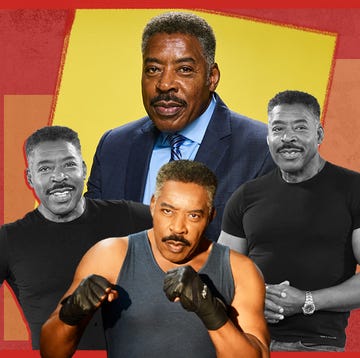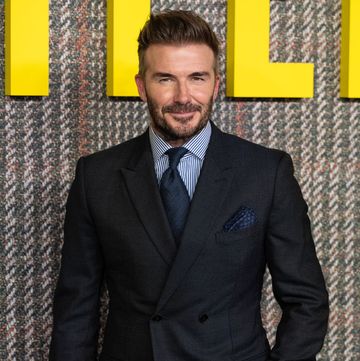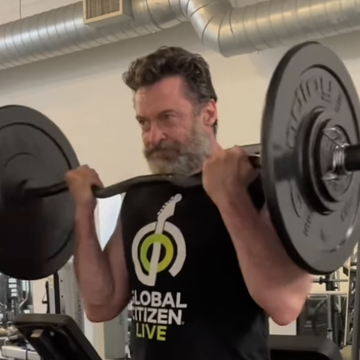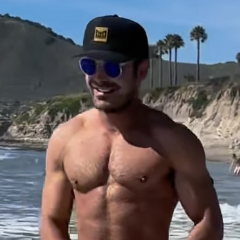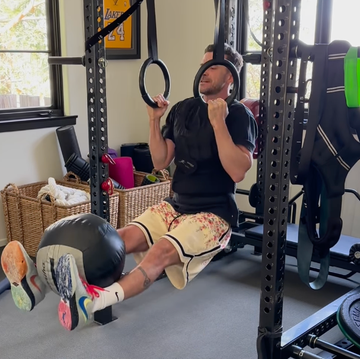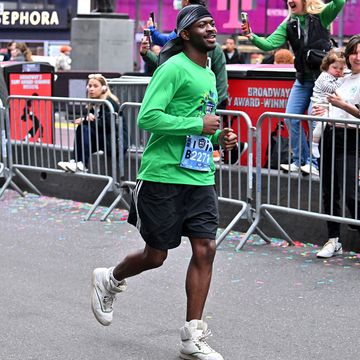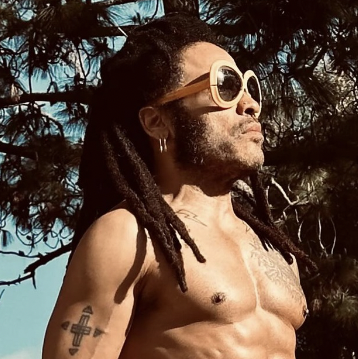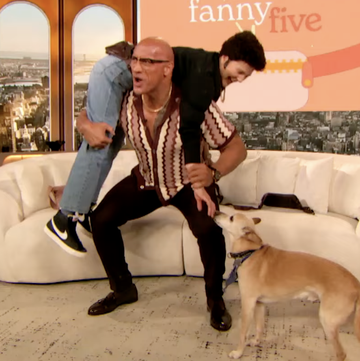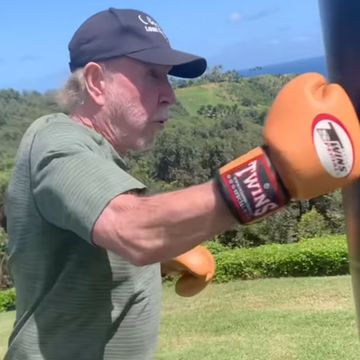The learning curve in our jiu-jitsu class is steep. In the first segment, the sensei teaches new moves, starting with arm bars and moving on to choke holds. I'm kneeling on the mat and Hunnam's arm is wrapped around my throat. The pressure on my neck is firm, but I feel strangely safe with him. He's strong but displays precise control and even a lightness of touch. Although brutal, there is an art to cutting off someone's air supply. I double-tap his arm to signal submission. The sensei, Rigan Machado, an eighth-degree black belt member of Brazilian jiu-jitsu's founding Gracie family, says Hunnam is a perfectionist—something I experience firsthand as we practice again and again and Hunnam fine-tunes his chokes. Nothing grounds you in the present more than being unable to breathe. Jiu-jitsu training demands focus and discipline.
That fortitude was tested during King Arthur. To prepare, Hunnam "worked out like a motherfucker." He packed on 20 pounds of muscle by strength training and spent hours learning sword fighting and boxing. The movie's five-minute final fight scene took five days to shoot, filming from 7 a.m. to 6 p.m. "It's not even as much the physical benefit of training; it's the mental," he says. "When you're training every day in a combat discipline, it just gives you that eye of the tiger. Then if someone acts aggressively toward you, I can run all the scenarios through my head—you know, like I'm going to step to the side and put an elbow through your face."
Hunnam sought to reimagine the noble action hero with Ritchie, himself a black belt in BJJ. "We wanted to do something a little rougher around the edges while still dealing with the rich Arthurian mythology," Hunnam says.
After King Arthur, Hunnam had 10 days off. Then he lost nearly 40 pounds in eight weeks playing his next role—Colonel Percy Fawcett, an obsessive British explorer, in The Lost City of Z. Hunnam eliminated dairy, carbs, and sugar. Then he went vegan. The shoot was in humid 100-degree weather off the grid in the Colombian jungle. Hunnam says the biggest hardship was the isolation. He talked to no one off the set, not even his girlfriend, for four months.
"People are all like, 'that's so Method of you.' Maybe it is, but I was worried about the emotional breadth of what I had to portray. I had to access that on a day-to-day basis, so I put myself in the position of living it. I felt the fear, the loneliness." Insects attacked constantly; one even burrowed in his ear. A lightning strike knocked Hunnam off his feet. The movie was shot in sequence, and by the end everyone was a little crazy, says James Gray, the film's director. "Charlie was starving and unhappy. You can see the hopelessness in his eyes. But he never missed a beat. He listens, acts, and then reacts.
"The body transformations continued with Papillon, the most recent movie he filmed. He'd regained some weight and had to lose 30 pounds. "My body was reluctant to drop the weight again," he says. He used the same vegan diet and stole a vice from his character, a felon-turned-prison-escapee: cigarettes. Hunnam puffed "like a madman" and sustained himself on coffee and nicotine for three months. "My body was a mess," he says. "It's not easy to quit smoking." He's currently using e-cigarettes to transition off.
One vice he did quit was smoking weed. He would burn through an ounce a week, but stopped in his early 30s. "In those stupid ways that we identify with ourselves, I felt like I was a Rasta," he says. "I was sort of proud at my enormous ability to smoke pot and function. But I realized I didn't want to spend my life stoned.



